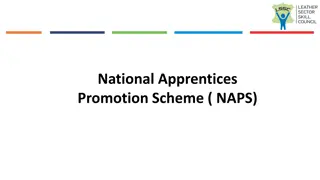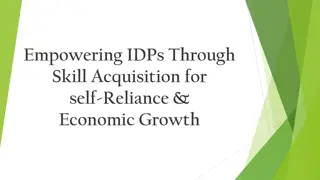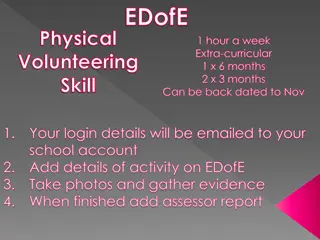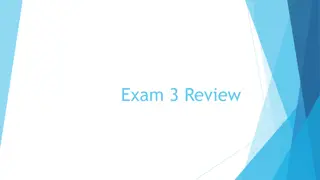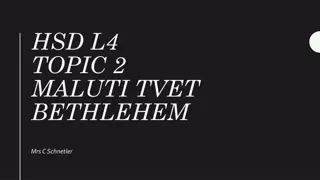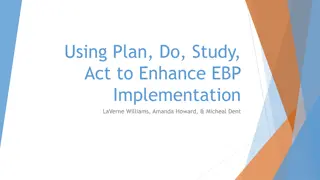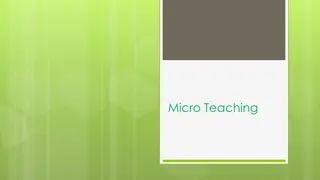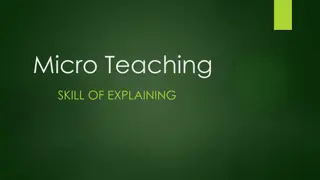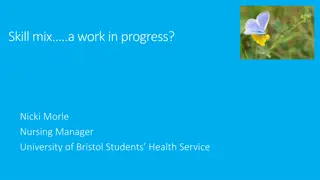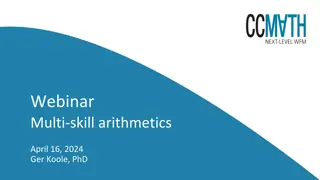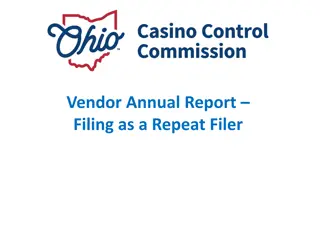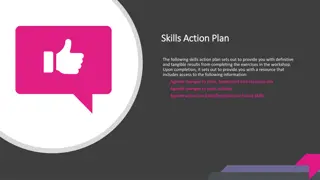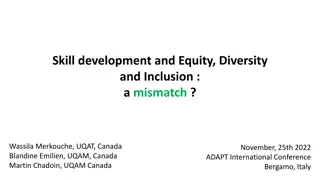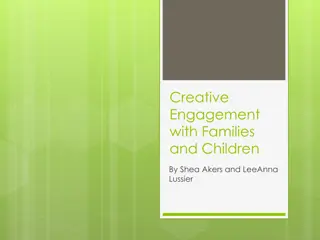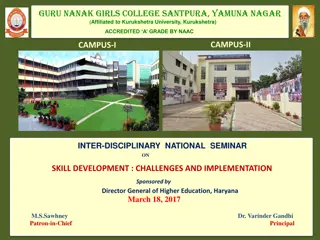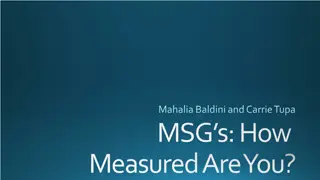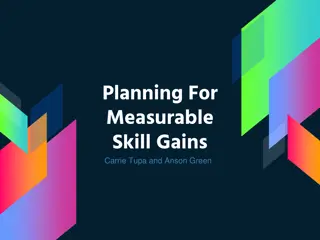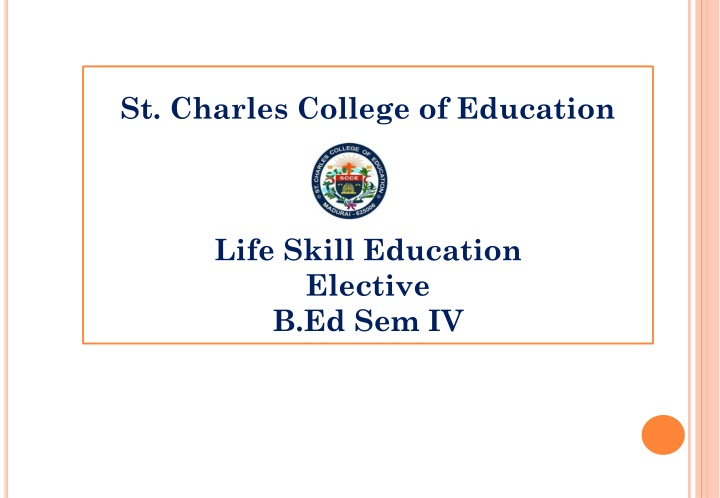
Enhancing Cognitive Skills: Importance of Self-Awareness and Critical Thinking
Explore the significance of cognitive skills such as self-awareness and critical thinking in education and life. Learn how self-awareness impacts decision-making, relationships, and emotional regulation, while critical thinking enhances problem-solving abilities. Discover the benefits and strategies to become more self-aware and think critically.
Download Presentation

Please find below an Image/Link to download the presentation.
The content on the website is provided AS IS for your information and personal use only. It may not be sold, licensed, or shared on other websites without obtaining consent from the author. If you encounter any issues during the download, it is possible that the publisher has removed the file from their server.
You are allowed to download the files provided on this website for personal or commercial use, subject to the condition that they are used lawfully. All files are the property of their respective owners.
The content on the website is provided AS IS for your information and personal use only. It may not be sold, licensed, or shared on other websites without obtaining consent from the author.
E N D
Presentation Transcript
St. Charles College of Education Life Skill Education Elective B.Ed Sem IV
Unit 3 Cognitive and Professional Skills
Cognitive skills: These are the core skills that human brain uses to think, read, learn, remember, reason, and pay attention. They take incoming information and move it into the bank of knowledge. Cognitive skills are brain based skills we need to carry out any task from the simplest to the most complex. Cognitive skills are many. In this we learn: Self Awareness, Critical thinking, Creative thinking, Decision Making, And problem solving are dealt with. Self awareness: It involves out perception of different aspects of the self including traits, behaviors and feelings.
Two states of self awareness: Public self awareness Being aware of how we appear to others Private awareness: Being able to reflect on one's own internal state. Importance of self awareness: People who are aware of how people see them are more likely to be empathetic to people with different perspectives.
Benefits of Self Awareness: It gives us the power to influence outcomes It helps us to become better decision makers It allows us to understand things from multiple perspectives It helps us free from assumptions and biases It helps us to build better relationships It gives us greater ability to regulate our emotions It decreases stress It makes us happier.
How to become more self aware person: Ask the what questions Strengthen the brain Ask others what their perception of us. 3.1.2 Critical thinking: Critical thinking is process of analyzing a topic or a problem deeply based on relevant information. Steps to follow when thinking critically to solve problem: Identify a issue or a problem Understand the reason behind the problem Research and collect the data or information on the issue
Research and collect the data or information on the issue Sort and organize finding and data Develop and implement the solutions Analyze the success and failure of different solutions Identify ways to refine the solutions. Why is critical Thinking Important: Critical thinking guides good decision making in the workplace allowing one to recognize barriers to success and finding solutions to potential issues.
Six steps to every problem we face to practice critical thinking: Find the exact cause Collect data , suggestions and arguments Be critical about data Confirm significance Conclude Present or communicate
Types of critical thinking skills: Problem solving Open-mindedness Creativity- Conceptuality Flexibility Curiosity Imagination Inferring Drawing connections Predicting Visions
Tips for improving Critical thinking skills: Broaden the technical or industry specific skills to become better at identifying the problems. Volunteer to solve problems in current job. Look for advice from experts Play games in groups or alone that require analysis or inference Critical thinking in education: Critical thinking is a term used by educators to describe forms of learning, thought and analysis that go beyond the memorization and recall of information and facts.
Creative thinking: This can involve: A new approach to a problem A resolution to a conflict between employees A new result from a data set A previously untried approach to earn revenue. Anew productivity or product feature. What is creative thinking: Creative thinking means thinking outside the box. Anything that involves AHA moment is creative. Artistic creativity: For this no need to be an artist. Perhaps we arrange retail displays for max impact.
Creative problem solving: Creative problem solving stands out as an innovative. Creative problem solver finds new solutions rather than simply identifying and implementing the norm. Creativity in STEM: The field of science, technology, engineering and math are highly creative. Designing a more efficient assembly line robot and writing an innovative computer program are highly creative acts. Types of creative thinking: Analysis: Before thinking creatively about something we have understand it. Open mindedness: Set aside biases and presumptions and open to receive new ideas.
Problem solving: When faced with problem consider ways that we can solve before asking for help. Organization: organizing is an essential part of creativity Communication: People only will appreciate if we communicate our creative idea effectively. Enhancing creativity in the classroom Choose a flexible classroom layout Follow a classroom theme Create a classroom library. Visualize ideas and goals Display inspirational quotes Create opportunities for reflection Enliven your virtual classroom
Take your teaching outside Introduce multi media lenring materials Have student practice creative journaling Support hands on learning Incorporate humor into classroom Celebrate class wins with ceremonies. Team building exercises Incorporate humor into classroom Explore different cultures Motivate students with rewards and recognition Encourage more color
3.1.4.Decision making: It shows the ability to select the best possible option from alternatives available. Steps involved in decision making process: Identifying the main points Gathering relevant information Follow the students devise solutions to the problem Analyze the possible solutions and arrive at best one Decidefinally Evaluate
Three important criteria for making a good decision: Values Common sense Experience 3.1.5.Problem solving: It is the process of achieving a goal by overcoming obstacles, a frequent part of most activities. Role of teacher in development of Problem solving skills: Model a useful problem solving method. Teach within a specific context Take enough time Ask question and make suggestions Link errors to misconceptions Communicate Encourage independence Be sensitive
3.2. Career skills: Career skills are the sum of your professional knowledge, skills and experience. Skills needed to become a teacher Communication Advocating for others Building communities Building relationships Communicating with parents and the community Collaborating with students, colleagues and administrator. Forging and maintaining interpersonal relationships Knowing and adapting to an Leading audience Networking Settingboundaries Speaking with clarity and avoiding jargon Writing reports, instructions and correspondence. Leading Listening
More skills that a teacher should have are: Critical thinking, Organizational skills, Creativity and Patience 3.3 Resume skills: A resume is a formal document that a job applicant creates to itemize their qualifications for a position. What should you not put on a resume? Marital status, current salary, political beliefs or any other personal details. Interview skills: Interviewing skills are your ability to interact with the employer or interviewer and show them why you are most fit candidate for the Verbal communication is the most important skill for an interview. Examples of interview skills: Interview questions preparation for the job.
Verbal communication is the most important skill for an interview. Examples of interview skills Interview questions preparation Verbal communication Non verbal communication Time management Confidence Active listening Positiveattitude Honesty
What are the five top interview techniques: Make a good first impression Dress appropriately Improve your interview skills Use the STAR technique to answer the questions Express gratitude after the interview. 3.5 Group discussion skills: Group discussion is a method used by an organization to measure whether the candidate had convinced individuality traits and skills that desires in its team mates.
Whatare the aspects that support a group discussion Cooperation Verbal communication Non verbal behavior Verification to norms Decision-making aptitude Knowledge Interpersonal skills Proactive Leadership Time management Logical ability Communication skills Group dynamics.
3.6: Exploring career opportunities: Career exploration is simply learning about various occupations and their fit with your unique career preferences. How to explore your career choices: Start with yourself Research viable careers Speak to others in the field Get involved in the workplace Revisit your choice 3.7: Team skills: Team work is the most sought after skills in the work place
Presentation skills: Understanding the audience Tell the story of you Create a call to action Use story telling to make your resume come to life. Rehearse your interview Watch your body language Control your voice 3.7.2: Trust and collaboration: Four trust collaboration principles: 1. Empathy must be visual in individual interactions: For collaboration to work well, all involved need to demonstrate empathy in the way we listen, talk and act.
Principle 2: The group mission must be paramount above the individual objectives: Self interest should never exist. Common good should be the prime goal. Principle 3: Interdependence will deliver the best results: A team dependent on another's strength can produce a strong bond of interconnectedness Principle 4. Progress is linear and not circular. For collaboration to work, plans need to be built to take progress forward.
3.7.3: Learning as a team skill: Focus on the person speaking Pay attention to both verbal and nonverbal communication Ask for clarification repeat what was said in your own words to ensure that you understood 3.7.4: Brain storming: Brain storming is a methods design teams use to generate ideas to solve clearly defined design problems. How to use brains storming best: Set a time limit Begin with a target problem, brief Refrain from judgment and criticism
Encourage weird and wacky ideas Builds on others ideas Aim for quantity Stay visual Allow one conversation at a time 3.7.5 Social and cultural etiquettes: Cultural etiquette is what you call the codes of behavior that rule different cultures. What is acceptable and what is not in a society. Tipping etiquette Cell Phone etiquette Different greeting around the world Eating etiquette and table manners around the world Culture is a two way street and is as much about you as about the society you are entering.
3.7.6 International Communication: Global or international communication is the development and sharing of information, through verbal and non verbal messages, in international settings and contexts. Masters in global and international communication programs: Masters degree program]rams in global communication introduce students to the foundational principles and theories behind international communication, as well as how cultural differences impact the creation and dissemination of global messaging across mass media. Below are the examples of potential career paths available to graduates with a masters degree in global or international communication. Job Opportunities: Professor Communication director Marketing specialist Non profit public reaction specialist Journalist.

